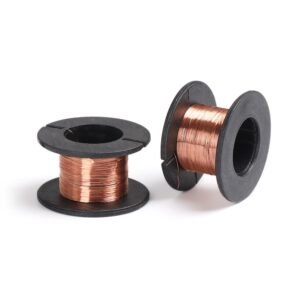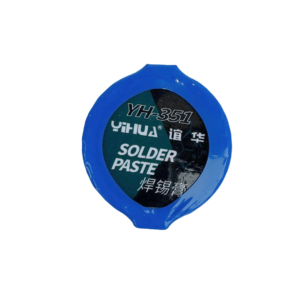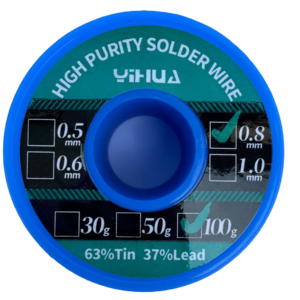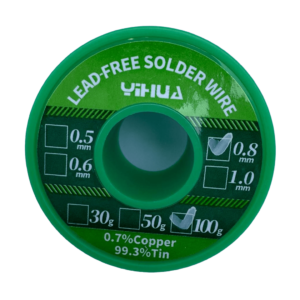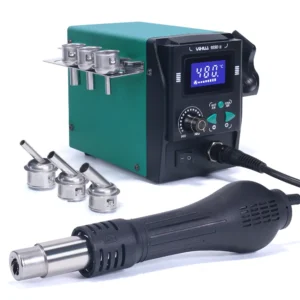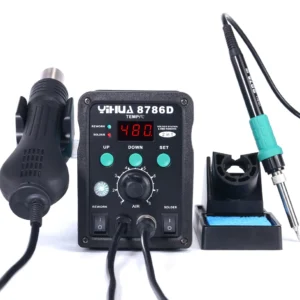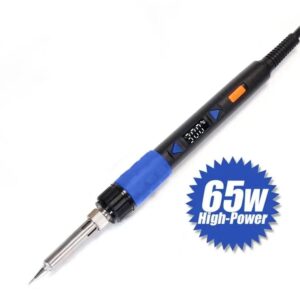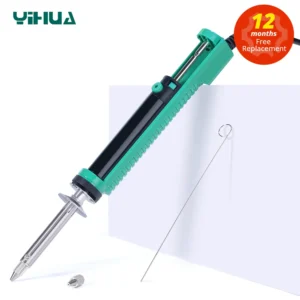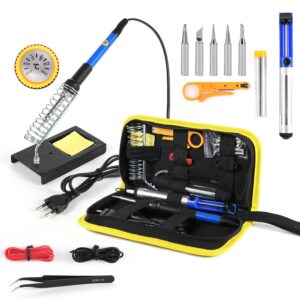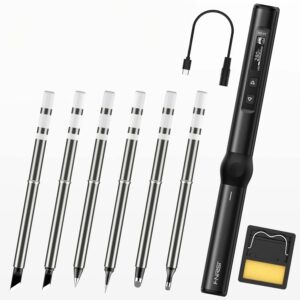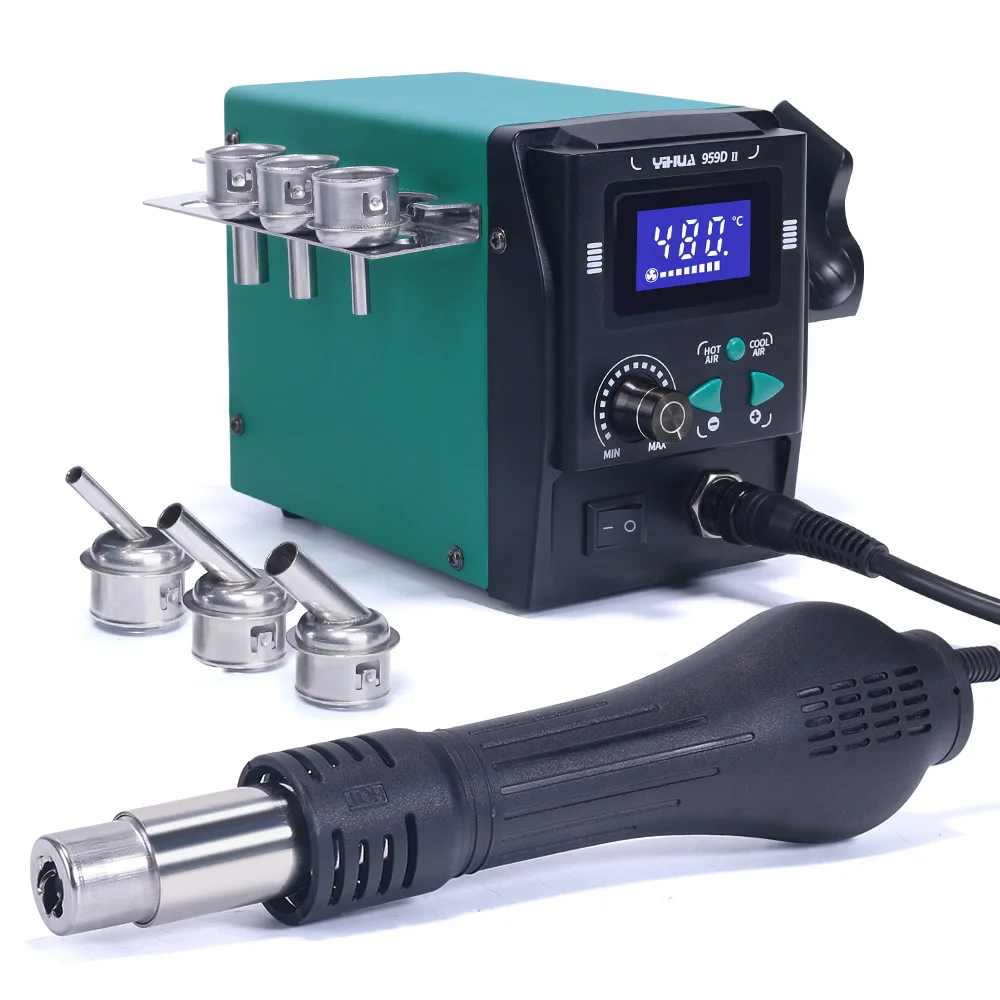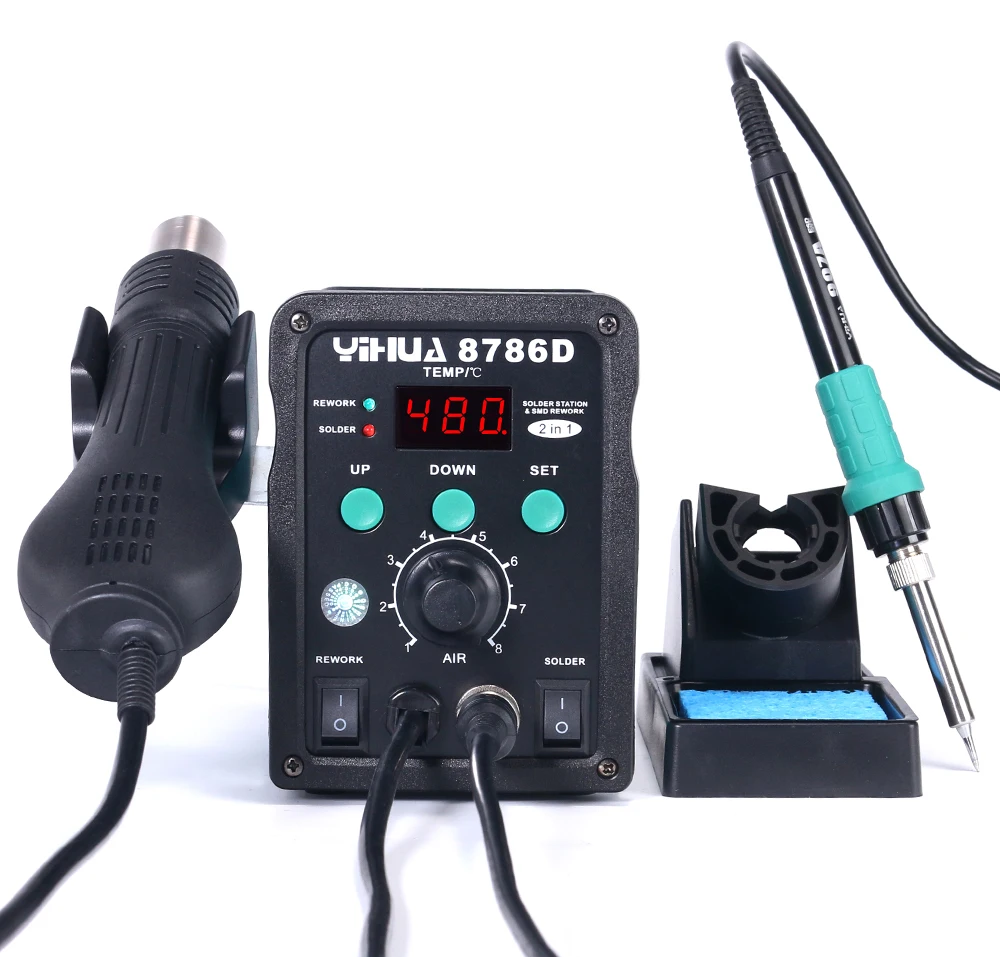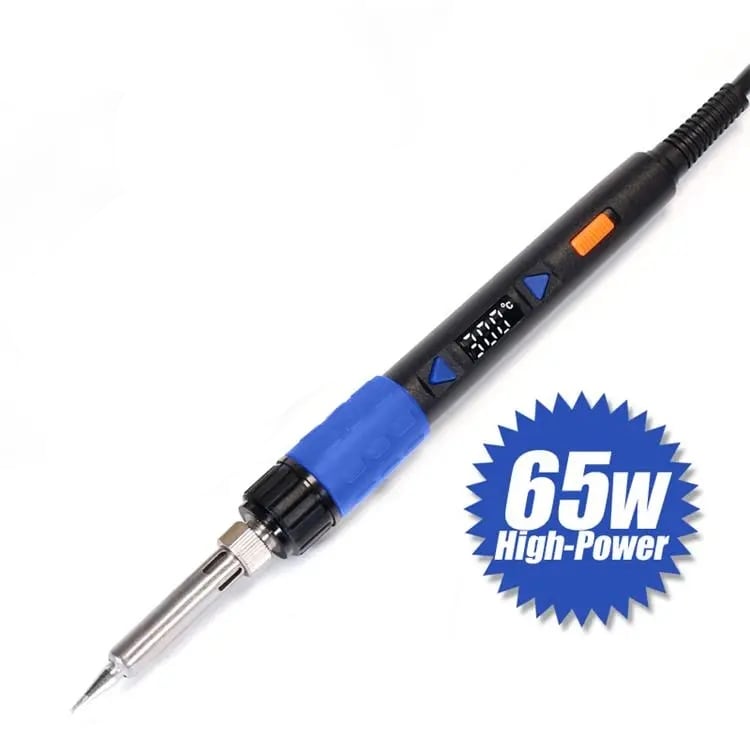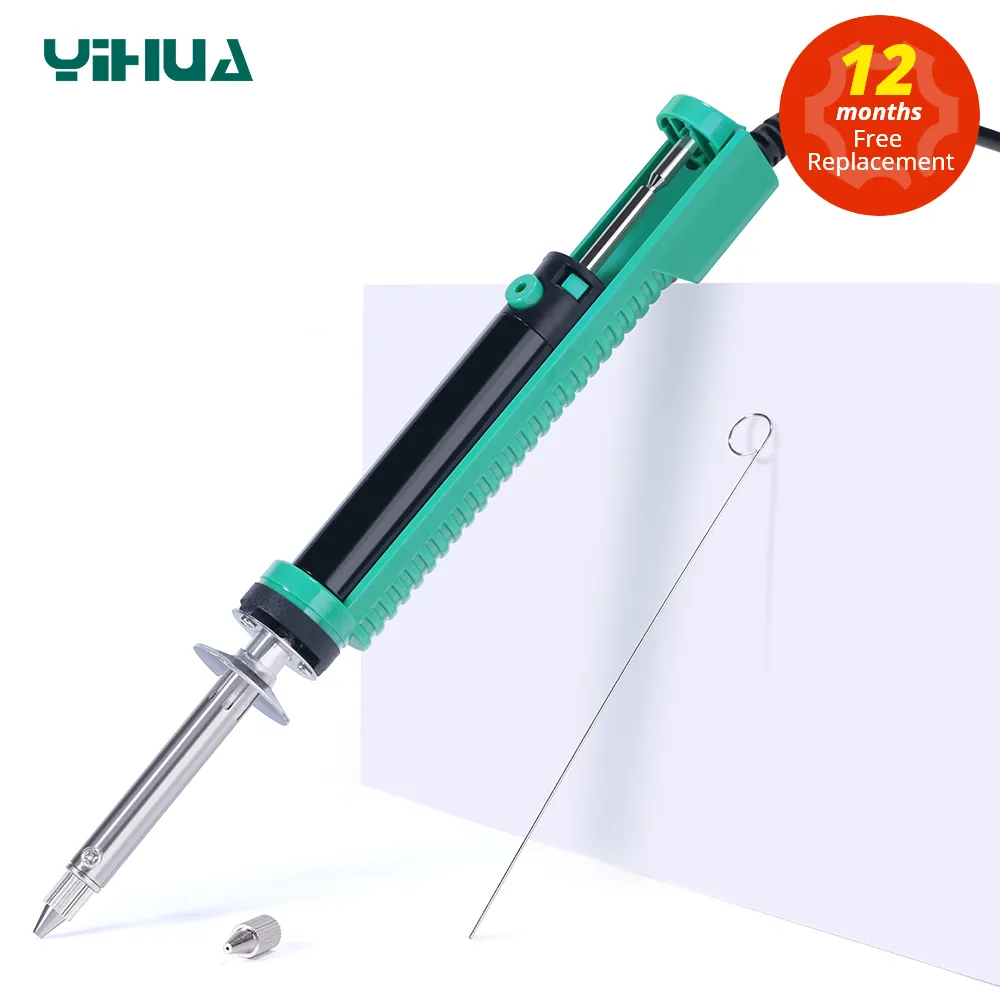Soldering, from circuit boards to metalwork, is a skilled trade that requires precision and material knowledge. Each project has unique challenges, requiring special techniques and guidelines to ensure strong, long-lasting joints. With heat and skill, soldering brings together metal and innovation.
Key Takeaways
- Understanding the variability between specialised soldering applications is key to successful fabrication and repair work.
- Proper selection and use of soldering iron or station can significantly affect the outcome of specialised soldering techniques.
- Material-specific considerations, such as melting points and conductivity, are pivotal in developing application-specific soldering guidelines.
- Crafting bespoke solder joints calls for an intimate knowledge of different solder and flux types available on the market.
- The meticulous process of hand soldering, in context to the industry, underscores its importance in achieving durable and conductive connections.
- Soldering is a skill combining ancient methods with cutting-edge technology, continuously evolving with the demands of contemporary applications.
Understanding the Basics of Specialised Soldering
Soldering for specific applications requires a deep appreciation for the technical nuances of joining materials. It’s a craft requiring precision and specialized knowledge, especially considering the various mechanical and electrical connections integral to modern technology. Advancing from the classic methods, soldering today employs sophisticated approaches intended for specific projects, underpinned by specialised soldering techniques that are second to none in their demands for accuracy and durability.
At the core of these specialised tasks is the unassuming yet essential component—solder. It’s more than merely a fusible metal alloy; it’s the bedrock of electrical continuity, ensuring a steadfast bond amidst the tremors of daily operation. Soldering tips for specific projects cater to individual application requirements, as one size seldom fits all in the intricate world of engineering.
Defining Solder and Its Role in Electrical Connections
The critical role played by solder in electrical connections cannot be overstated. Solder is the thread that weaves through components, granting them strength against the rigors of mechanical forces while guaranteeing the flow of current remains uninterrupted. Its proper application sets the stage for the enduring functionality of diverse electronic devices, embodying a symbiosis of mechanical robustness and electrical integrity.For more on soldering techniques and tools, visit Kunkune.
The Integral Functions of a Soldering Iron
A soldering iron serves as an extended arm of the technician, bringing to bear heat where it’s most needed. Crafted with a copper core encased in protective plating, its tip is engineered for efficient thermal conduction—laying the groundwork for exquisite precision in every meld. The iron stands as a statement of purpose, a declaration of craftsmanship and the pursuit of connection excellence.
Comparing Soldering Irons and Soldering Stations
When venturing into the realm of soldering stations, the discerning user encounters a paradigm of control. In contrast with the humble soldering iron, a station provides mastership over temperature, transforming the experience to one of finesse rather than force. With features like set-temperature memory and lock-out capabilities, soldering stations redefine the boundaries of possibility, enabling artisans to tackle the most delicate of soldering tips with unwavering confidence.
Through this lens of understanding, we acknowledge the myriad factors that shape the soldering landscape. From the meticulous selection of materials to control of the very element of heat, specialised soldering techniques emerge not just as means of connectivity, but as the embodiment of progress and precision.
Selecting the Right Type of Solder for Your Project
Embarking on a soldering project compels a decision that could significantly impact both the process and the result: selecting the appropriate type of solder. This choice, intertwined with precise soldering techniques, is pivotal to achieving custom soldering solutions. Whether you’re engaged in electronics repair, assembly or crafting custom pieces, understanding the materials you work with is vital. It allows for the delivery of not just a connection, but a promise of endurance and effectiveness.
Given that the solder is instrumental to creating durable and conductive joints, let’s explore the critical details you should consider to tailor your project with specialised soldering techniques.
Pros and Cons: Lead versus Lead-Free Solder
In the debate between lead and lead-free solders, your choice hinges on the application’s demands and regulatory stipulations. Lead solder, prevalent in the United States and high-reliability sectors such as aerospace, is often chosen for its lower melting point and ease of use. Conversely, the shift towards environmentally friendly practices propels lead-free options to the fore, comprising metals like tin and silver, meriting higher temperatures for proper adhesion.
- Lead Solder: Lower melting point, easier to work with, preferable for durability.
- Lead-Free Solder: Often required for compliance, higher melting temperatures, potentially more complex flux needs.
Matching Wire Diameter to Component Size
In the realm of custom soldering solutions, the diameter of the solder wire should be congruent with the component size. A mismatch can induce issues, such as excessive solder use with thin wires or difficulty manoeuvring around densely populated printed circuit boards with thick wires. The aim is to achieve efficient and clean soldering results without causing thermal stresses to adjoining components.
| Component Size | Recommended Solder Diameter |
|---|---|
| Small, delicate components | 0.5mm – 1mm |
| Standard components | 1mm – 1.5mm |
| Large connections | 1.5mm – 2mm+ |
Benefits of Using Flux Core in Solder Wires
Accompanying the technique and material is the type of solder wire, with the flux core variant leading as a facilitator for expedited and efficient soldering. Flux is instrumental, cleansing in preparation for the join, promoting excellent wetting with subsequent flow. Its inherent presence within the core of the wire distributes it evenly upon melting, boosting the creation of reliable and clean joints integral to precise soldering techniques.
- Effective removal of oxidation from joining surfaces.
- Automatic distribution of flux during soldering enhances solder flow.
- Flux core wires streamline the process, ideal for custom and specialised projects.
The Significance of Flux in Quality Soldering
Flux is the unsung hero in the world of soldering, a vital factor that can either elevate or diminish the integrity of a solder joint. In the intricate ballet of metallurgy, flux acts as the choreographer, ensuring the surface of the metals come together in a clean and corrosion-free performance. It is the agent that preps the stage for a strong and reliable bond, vital for soldering solutions targeting specific industries and materials. Herein lies the essence of its role, buttressing the melding of metals with an exactitude that parlays into the long-term reliability of electronic devices, plumbing systems, and even the structures that adorn our skylines.
Choosing the Appropriate Type of Flux for Your Solder Joint
The choice of flux is as critical as the choice of solder itself, with specific types tailored to unique soldering scenarios. No-clean flux, for instance, is favoured in settings where additional cleaning post-soldering is undesirable, leaving behind only a negligible residue. However, when exceptional solderability is called for, Rosin Activated flux (RA) steps into the frame, requiring the removal of residue after the fact to forestall any potential for corrosion. Water-soluble fluxes (OA) present a notable ease in cleanability, dissolving readily in deionised water or isopropyl alcohol, yet demand meticulous removal to prevent corrosive after-effects.
Halogen and Zero Halogen Fluxes for Eco-conscious Soldering
In the vanguard of eco-conscious soldering, we encounter halogen-free and zero halogen flux options. Eschewing elements such as chlorine and bromine, these flux types resonate with industries striving towards greener production methodologies and adherence to strict environmental regulations. However, the endeavour for sustainability does come at a cost: the trade-offs can include challenges in cleanability and sometimes a concession on performance characteristics. Nevertheless, they represent a significant stride towards reducing harmful chemical use within the soldering ecosystem and bolstering the industry’s commitment to environmental stewardship.
Soldering Techniques for Specific Materials
In the pursuit of targeted soldering methods, a one-size-fits-all approach is far from sufficient. Recognizing the unique attributes and requirements of different materials is fundamental in applying custom soldering solutions that perform optimally under varying conditions. As diverse as materials may be, so are the soldering techniques tailored to ensure their integrity and functionality are preserved during and after the soldering process.
Let’s delve into some of the chief methods and the corresponding materials they suit best:
- Soft Soldering: The most widely applied of soldering techniques, soft soldering uses alloys with lead or tin as a filler. It is ideal for components that might not withstand the heat exerted by other methods. Typically employed in electronics due to its lower operating temperatures, it is prized for creating reliable electrical connections that don’t endure significant mechanical load.
- Hard Soldering: Utilised for joining more robust metal parts, hard soldering involves filler metals with higher melting points. This method is commonly attributable to jewellery crafting, where more durable joins are paramount.
- Brazing: For the heaviest-duty applications where exceptional joint strength is a necessity, brazing is the answer. While it uses metals with even higher melting points than hard soldering, the base metals are not melted, just the filler material, preventing the weakening of the components themselves.
The choice of technique is deeply influenced by the end-use of the material, its melting point, and its tensile properties. Application-oriented specifications are essential in selecting among targeted soldering methods to maintain structural integrity and function.
| Material | Technique | Attributes |
|---|---|---|
| Electronics Components | Soft Soldering | Lower temperature, suitable for delicate and heat-sensitive components |
| Jewellery Metals | Hard Soldering | Higher temperature, needed for durable, long-lasting joins |
| Heavy-duty Metals | Brazing | High temperature, used for strong, resilient connections |
Effective custom soldering solutions advocate for an intimate understanding of the material’s proclivities to temperature and the ultimate purpose of the product. The soldering techniques adopted should not stress the physical components beyond their limits while ensuring the formation of sound and robust joints.
Application-Specific Soldering Guidelines for Electronics
In the intricate sphere of electronics, the application of precise soldering techniques is vital for accomplishing connections that are both mechanically robust and electronically unfailing. The convergence of specialised materials, delicate components, and thermal considerations necessitates specialized soldering techniques tailored to the individual demands of electronic circuitry. It is this precision that manifests in durable and effective electromechanical bonds on printed circuit boards (PCBs), a mainstay of modern electronic devices.
One of the paramount challenges in electronics soldering is regulating temperature to avoid thermal stress while ensuring a reliable solder joint. Such control is crucial for maintaining the components’ integrity and the board’s overall function. Let’s delve into the guidelines that elucidate the path from component selection to the successful application of targeted soldering methods, fundamental to the electronics industry.
To commence, the selection of appropriate solder is a prelude to precision; balance needs to be struck between solder composition, melting points, and the intended application. When soldering components that will be used within the UK, the inclination often leans towards lead-free solder, responding to environmental and health safety standards. Yet, for high-reliability electronics deployed in harsh environments, exemptions can occasionally allow the use of lead solder, renowned for its easy handling and lower thermal impact.
Following solder selection, the adoption of targeted flux types is executed with an understanding of their cleansing and wetting capabilities. No-clean flux is often the preferred choice when additional cleaning is impractical, streamlining the soldering process and leaving minimal residues. For tasks requiring an immaculate finish or where corrosion is a concern, more aggressive fluxes like Rosin Activated (RA) or Water Soluble (OA) are utilized, with the caveat that any residues must be meticulously cleaned post-soldering to avoid compromising the joint.
- A comprehensive understanding of thermal management is key to effective soldering in electronics.
- Choosing the correct solder type — lead or lead-free — is determined by not only component requirements but also by compliance with international standards and regulations.
- Flux type selection is driven by the need for cleanability and component preservation, particularly in densely populated PCBs.
- Drag soldering, a specialized soldering technique, is a method often necessitated for making multiple, fine-pitch connections with additional flux to avoid cold joints or bridging.
Soldering in the electronic realm is a synthesis of science and artistry, where the application of exacting standards in solder and flux choice aligns with specialized soldering methods to create resilient electronic interfaces. Adhering to these guidelines ensures that the structural and electrical integrity of every device meets the stringent demands of a technology-driven world.
Understanding the balance between soldering material properties and the thermal limitations of the components is the essence of crafting precise soldering techniques in electronics.
Custom Soldering Solutions for the Plumbing Industry
The nexus of the plumbing industry with specialised soldering techniques reveals a rich tapestry of applications tailored to the unique challenges of water systems. It is here that professionals implement soldering tips for specific projects, forming a seamless union of pipes that demonstrates the hallmark of skilful workmanship. This intricate dance of heat and metal demands precision and a robust understanding of material behaviour under the torch’s glow.
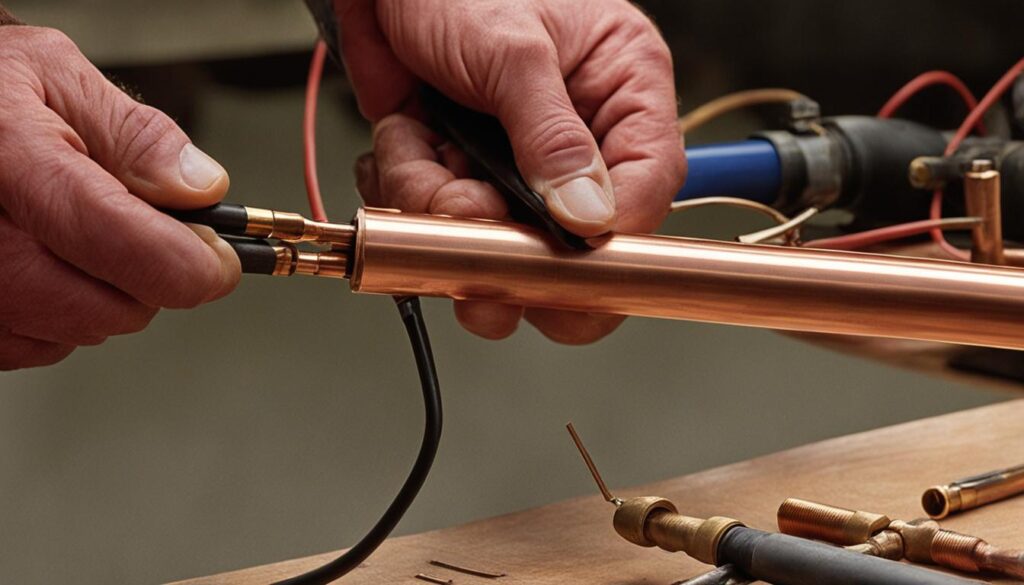
Techniques for Reliable Plumbing Fixes Using Solder
Within the labyrinth of pipes and fittings, a well-done solder joint serves as a bulwark against potential leaks and structural failings. It is not just about joining two surfaces; it’s about crafting a bond that holds steadfast amidst the constant flow and pressure. Leveraging the best soldering techniques, plumbers can ensure a watertight seal that stands the test of time and use.
- Proper assessment of the joint and fitting requirements before initiating the soldering process.
- Cleaning all surfaces thoroughly to maximize the solder’s adhesion and ensure a clean, sturdy join.
- Even application of heat around the join to allow for an even flow of solder, preventing weak spots.
- Selection of a solder type with an appropriate melting point to suit the task, avoiding excessive heat that compromises the pipe’s integrity.
Special Considerations When Soldering Copper Pipes
Copper, with its superior thermal conductivity and resistance to corrosion, is a mainstay in the plumbing sector. Yet, its very virtues call for attention to detail when soldering. The effective joining of copper pipe hinges on understanding and applying the proper heat levels, solder, and flux, a trifecta that ensures a durable, leak-free result.
- Employing the right flame size to heat the pipe effectively without causing damage.
- Applying flux conscientiously to prevent oxidation during the soldering process.
- Understanding the heat-carrying properties of copper to avoid overheating and ensure a seamless distribution of solder within the joint.
- Allowing a full cool down period post-soldering before testing the join, to prevent premature stress on the new join.
This craftsmanship translates into the longevity and reliability of plumbing networks, safeguarding against the encroachment of leaks and failures.
Precise Soldering Techniques Used in Jewelry and Metalwork
The artistry involved in jewellery and metalwork is highlighted by the precise soldering techniques that they require. The materials in question are often precious and delicate, demanding a level of finesse that is met with specialised equipment and methods. Not only must the aesthetic be considered, but the functional integrity of the final product is also paramount. This necessitates a bespoke approach with soldering tips for specific projects. The careful balance between temperature, filler material, and craftsmanship defines the success of such endeavours.
Adapting Soldering Methods for Delicate Jewelry Pieces
In the realm of bespoke jewellery creation, each piece exhibits a unique identity and therefore requires specialized soldering techniques. Jewellers often gravitate towards solders with a high silver content to ensure that the joints not only look pristine but are also durable. The intricacy of this work is made possible with tools such as fine-tipped soldering pens, which allow for the targeted application of heat and solder. The use of interchangeable tips can provide varying levels of precision tailored to the specific demands of certain jewellery elements, epitomizing the union of delicate art with soldering science.
Employing Hard Soldering for Musical Instrument Repair
Musical instruments are not only auditory delights but are often highly valued for their craftsmanship, particularly when made of materials like brass and silver. When it comes to repairs, hard soldering is frequently employed. This specialised approach involves using a flame to bring the solder to a temperature high enough to create strong bonds without melting the instrument’s material. The focus here lies on a technique that respects the thermal sensitivity of these metals, applying just enough heat to forge a resilient bond. By employing precise soldering techniques, artisans can restore the instrument’s functionality and aesthetics, ensuring a seamless and sonorous performance.
The dedication to nuanced soldering is clear within the industries discussed, where each bond reflects the dual necessities of beauty and resilience. In both jewellery making and musical instrument repair, specialised soldering techniques are not just practical means to an end but expressions of a timeless craft that blends traditional methods with innovative solutions.
Targeted Soldering Methods in Artistic Projects
The intersection of art and technology is epitomised in the specialised soldering techniques applied within artistic realms. Here, the precise merger of form and function casts a new light on soldering solutions designed for specific industries. In taking a closer look at such applications, one can appreciate the finesse and adaptability soldering offers to artisans and craftsmen alike.
Stained Glass Creation – Joining Glass Pieces with Solder
The time-honoured craft of stained glass window creation employs the use of a soldering iron as a paintbrush of sorts, carefully delineating the contours of coloured glass. The artisan’s deft hands guide the heated tip, allowing the soft silver line of solder to form and solidify, creating a tapestry of light and colour. It’s a testament to the precise soldering techniques that transform individual pieces of glass into a cohesive, structural work of art.
Mosaics and Metallic Sculptures – Achieving Artistic Precision with Solder
The crafting of mosaics and metallic sculptures often requires a harmonious blend of sturdy construction and delicate aesthetics. Through specialised soldering techniques, artists are empowered to construct intricate metal designs that purely capture their creative vision. Whether assembling complex mosaics or constructing sculptures with minuscule metallic elements, precise temperature control and steady handiwork are fundamental to achieving the desired level of intricate detailing and durability.
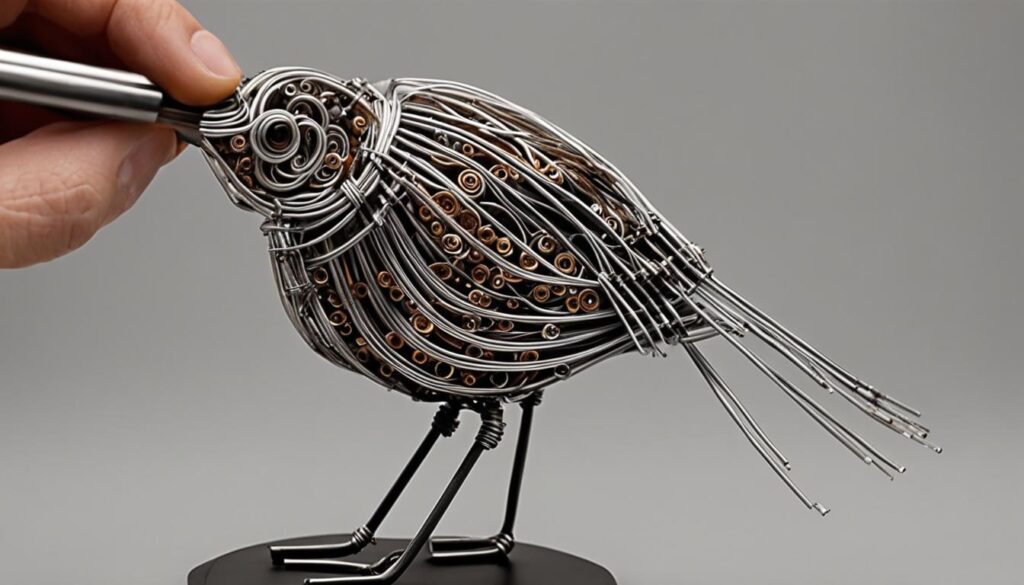
From the luminescent allure of stained glass to the tactile permanence of sculptural metalwork, specialised soldering techniques serve as an unspoken language of artistry. These soldering solutions not only cater to the unique constraints and demands of various artistic projects but also ensure that each creation carries with it the promise of longstanding beauty and integrity.
Soldering for Specific Applications: Expanding the Boundaries
In the expansive world of modern industries, specialized soldering applications are pivotal in advancing technology and reinforcing traditional craft. This broad spectrum ranges from the precision required in delicate electronic repairs to the robustness needed for construction and metalworking. As we explore the unique requirements across various sectors, it becomes evident that detailed soldering techniques are indispensable for project success. Such versatility is not achieved by happenstance but through a careful consideration of materials, tools, and approaches that encompass tailored soldering methods for each specialised task.
Consider the roofing industry, where the application of soldering is vital for creating long-lasting, weather-resistant joins termed flashing. The nature of these requires rigour and durability, with the soldering process forming a barrier against the harshest of elements. Electricians, on the other hand, prize precision over brute strength as they splice wires within residential or commercial properties, their soldered connections a testament to safety and functionality.
In the realm of automotive repairs, soldering skills are equally cherished, providing essential services in electrical system maintenance and ensuring that the intricate network of automotive wiring is reliable and secure. Such diverse applications demand a toolbox of tailored soldering methods, each adapted to the specifics of the materials involved and the environmental conditions faced.
- Roofing Industry: Requires heavy-duty soldering to withstand the elements.
- Electrical Work: Demands meticulous soldering for secure and safe electrical connections.
- Automotive Repairs: Relies on durable soldering to maintain the intricate electrical systems.
To further illuminate the importance of adaption in soldering practices, we can envision a table that contrasts the differing needs of these specialties. The preferred solder types, flux contributions, and heating tools would all reflect the specific demands of the material and operating conditions of each sector. Thus, we begin to comprehend that soldering is more than a mere joining of metals; it is an adaptive process tuned to the cadences of each unique application.
The ability of soldering to stretch its boundaries and mould itself to a myriad of uses is a testament to its integral role in both preservation and innovation. Whether fortifying the metalwork of heritage buildings or piecing together the latest in electronic components, soldering remains a mainstay of expert craftsmanship and a beacon for those who look to link the past with a cutting-edge future.
Conclusion
As we’ve journeyed through the compendium of selection criteria and procedural nuance, the profound significance of soldering for specific applications comes into sharp focus. The ability to meld disparate metals into harmonious joinery speaks of an ancient craft continually realigning itself with the thrust of progress. Far from being a relic of the past, specialised soldering techniques reveal themselves as essential threads in the fabric of modern innovation, substantiating their persisting relevance in a technology-driven age.
The compendium of knowledge laid out in this guide underscores the critical importance of deploying application-specific soldering guidelines. It enlightens the path towards mastering artful proficiency in soldering applications, bridging the gap between mere functionality and exemplary craftsmanship. It elevates the discourse from being about mere adherence to specifications to embracing a philosophy where every soldered joint is a testament to dedication and precision.
Embracing the intricate craft of soldering, with its vast array of alloys, fluxes, and the diurnal evolution of tools, requires a dedication to understanding the finer intricacies of this trade. It is apt, therefore, to assert that in the UK, where finesse in craft is so revered, mastery of specialised soldering techniques represents much more than a vocational skill. It is an embodiment of the commitment to excellence that is demanded across these myriad industries, for which the United Kingdom is known. Herein, the diligence applied to selecting the correct materials, the deftness in applying heat, and the precision with which joints are fashioned, culminate in a soldered assembly that is as robust as it is refined.

